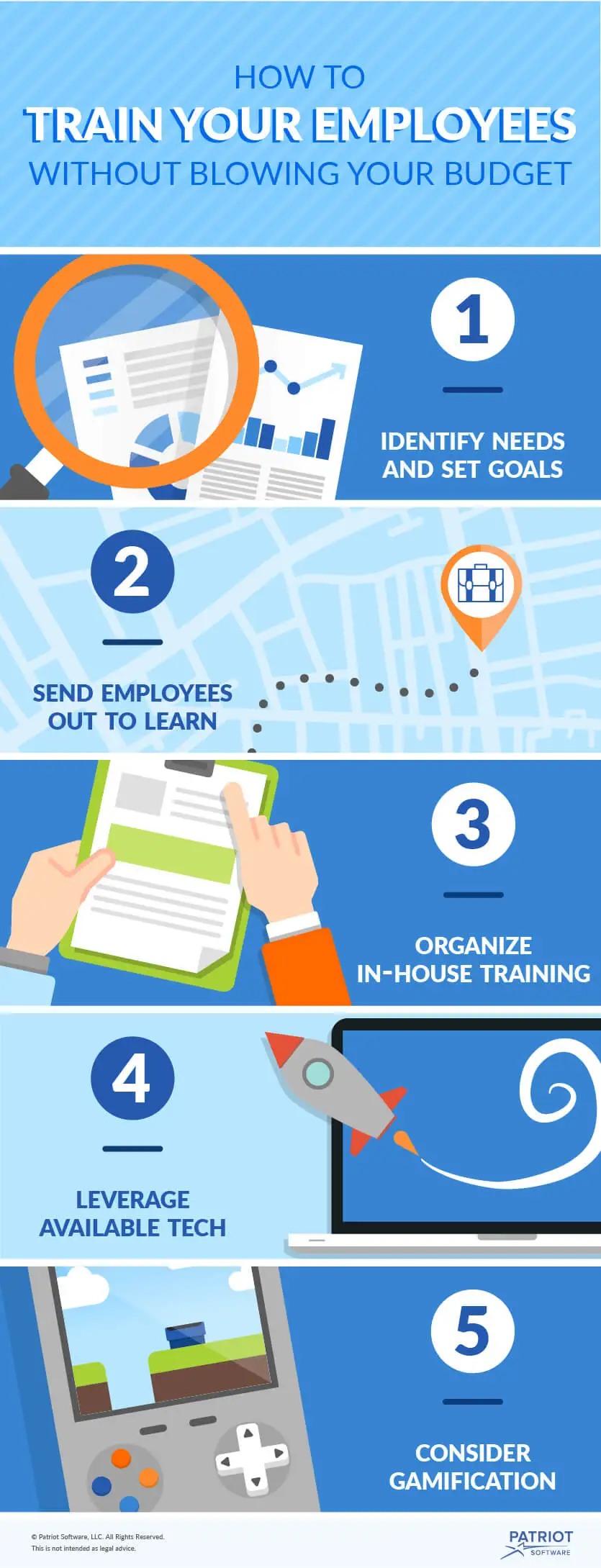When running a small business, it can be extremely tempting to cut financial corners, and one of the first potential items on the chopping block is the budget for employee training programs. However, well-trained employees are an essential part of any business, even the smallest one.
The thing is—untrained employees drain budgets by not working to their efficiency. Without effective small business employee training, workers might use their time unwisely and contribute poorly. Furthermore, untrained employees have lower job satisfaction, contributing to a higher turnover rate.
If you have ever wondered how to balance your business budget while keeping a highly-trained staff, this post is for you. Let’s see if any of these employee training programs for small businesses could be right for you.
Identify Needs and Set Goals
As an expert, you know what skills your employees must have. Draw on your expertise to make decisions about the types of training your employees need, and identify any gaps.
Talk to your employees. You can use annual performance reviews to open the dialogue. This collaborative approach will help you devise a strategy for maximizing your employees’ performance. Knowing not only what your employees’ personal strengths are, but where their interests lie, will help you strike a healthy balance. Keep an open mind while considering employee training program ideas.
Send Employees Out to Learn
There are all sorts of (inexpensive) industry associations, conferences, and seminars your employees can attend. Where possible, take advantage of train-the-trainer models. These allow key employees to attend outside training and pass the knowledge on to others internally.
Some low-cost types of training are offered by local governments, the Small Business Administration (SBA), and local Chambers of Commerce. Membership in these organizations can provide you with targeted training at a reduced cost.
Often, training specific to certain aspects of industry are available by vendors and suppliers. For example, sometimes carriers offer training, like hazmat (hazardous materials) training, or manufacturers offer training on equipment operation. Do some research and find the most suitable option for your business.
Organize In-House Training
Consider organizing an in-house employee training plan where experienced employees mentor newbies – it is great because it occurs in a familiar environment with little or no employee training costs.
Do you have long-term highly skilled employees who could perform their job in their sleep? Pair them with newer untested employees. Mentoring programs help new employees feel more secure and longer-term employees take ownership and pride in their work.
Leverage Available Technology
Maybe you can’t fly four of your employees across the country for a seminar, put them up in a hotel, and offer them mileage reimbursement and a per diem without breaking the bank. But with a little digging, you can find an adequate webinar to teach those same four employees in the company break room.
So, leverage available technology – there are many free or cheap courses offered online. For example, Massive Open Online Courses (MOOCs) such as Udemy, EdX.org, or Coursera are gaining popularity. Not only are they available 24/7, they offer progress and performance monitoring so that you can rest assured your training objectives are being met.
There are also free open-source eLearning platforms such as Moodle which offer training on a wide-variety of topics. And, never forget the power of sites like YouTube. Many free training programs and demonstrations are available at the click of a mouse.
Consider Gamification
It is an excellent idea to apply gaming techniques to motivate your employees. Training is only successful when employees are engaged. Gamification is the process of teaching information using games. Through gamification, your employees will retain more knowledge, get instant feedback, and be more engaged in the process.
Gamification will help you set goals and meet training objectives. The games awaken a friendly competitive spirit within your employees, and the end result is often learning disguised as fun.
Conclusion
The challenges of operating a small-business are never-ending, but a well-trained professional workforce can set you apart from your competitors and contribute to your financial success.
Follow the above tips to start training your employees and increasing productivity in the workplace ASAP – it will soon reflect on the success of your business.
These views are made solely by the author.




